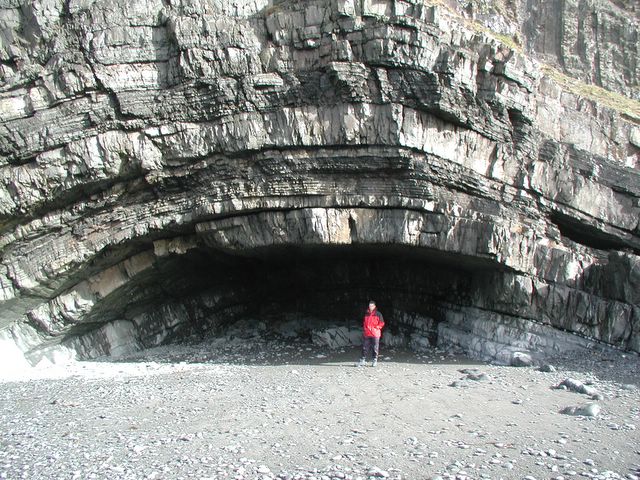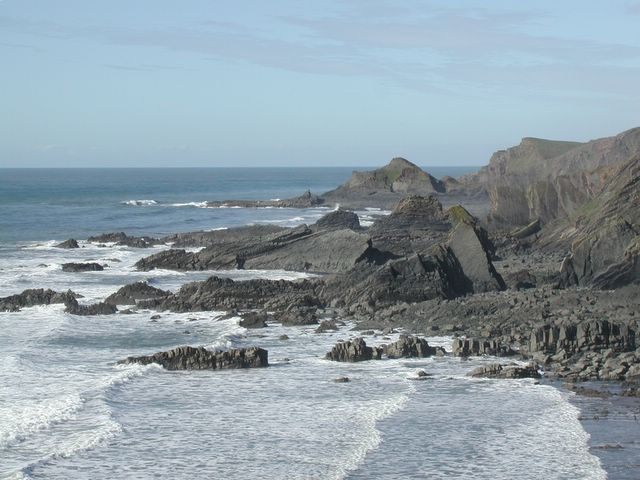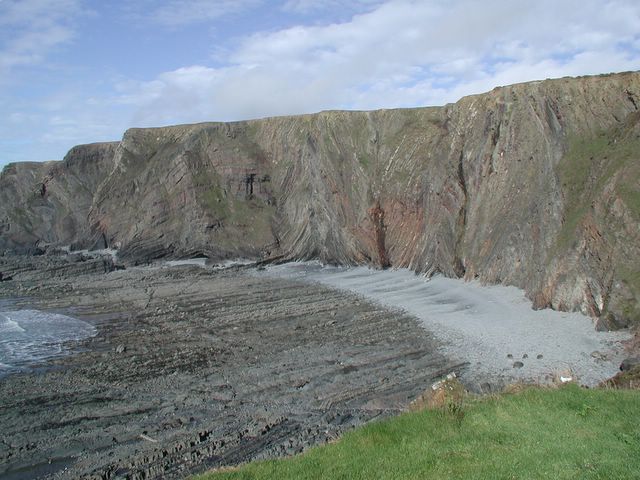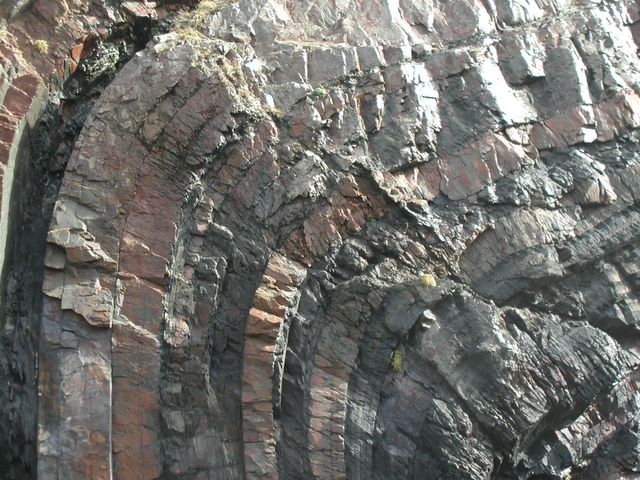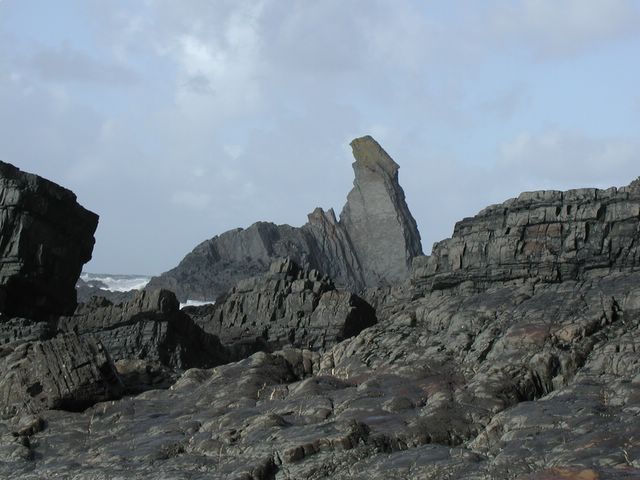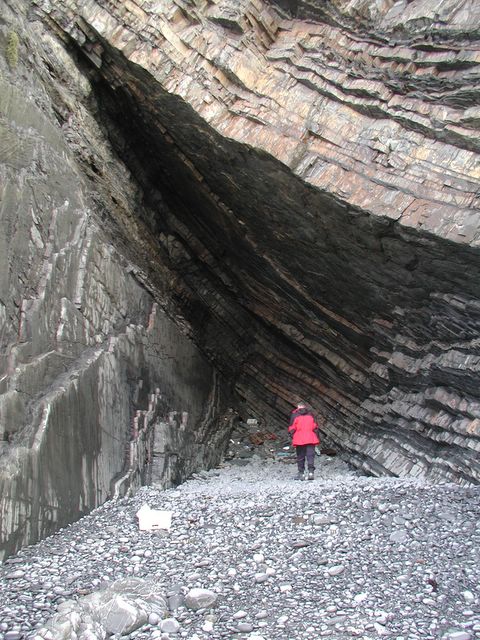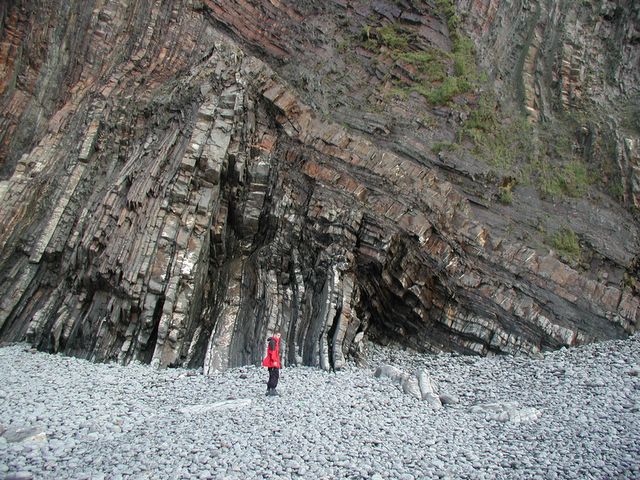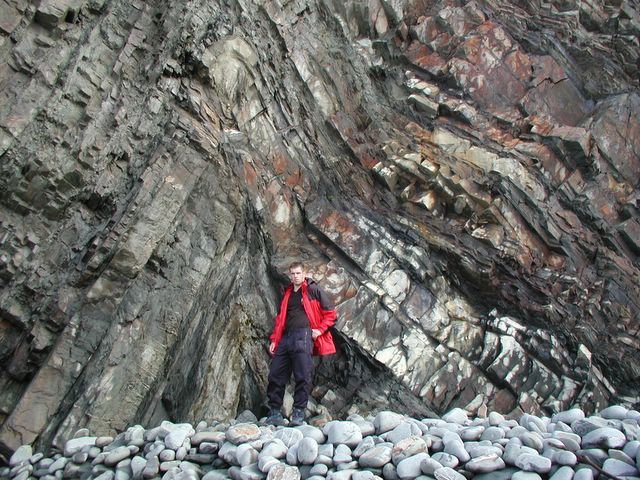The Local Geology of Hartland Quay
The rocks of Hartland Quay are the remains of a mountain range. Sedimentary rocks were deposited in a shallow sea during the Carboniferous period – about 320 million years ago. The layers are sequences of shales and mudstones representing the remains of sub-marine “avalanches” of sediments called turbidites. At the same time as the sands and mudstones were being deposited at Hartland, coals were being deposited in swamps, forming the South Wales coalfields.
Plate tectonics caused the collision of two super continents with Hartland Quay in the middle. Devon was at the southern margin of a super-continent called Laurasia, which collided with the super-continent Pangaea – to the South. As these two mega-continents collided during the Variscan Orogeny the rocks at Hartland Quay were buckled and folded, producing the spectacular chevron shaped folds exposed in the cliffs today. The top surface was then eroded flat.
The cliffs at Hartland Quay inspire both non-specialists and the professional geologist; and little or no geological knowledge is required to appreciate the hundreds of millions of years of natural history.
Dr Simon Jones, Principal Exploration Geologist, First Quantum Minerals, Ndola, Zambia Africa
